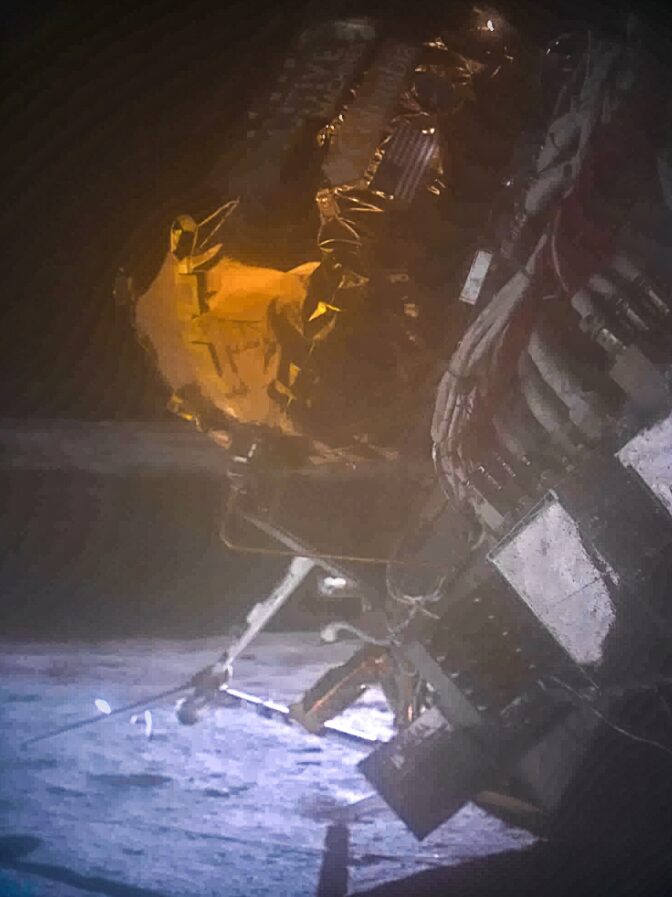In February, for 30 minutes, it was done NASA Ha A lighthouse lit on the moon,Successfully advanced testing Global Positioning System Which will make it safer for explorers in the Age of Artemis to visit and establish a permanent human presence on the Moon. called the demonstrator Lunar node 1LN-1 is an autonomous navigation system intended to provide a real-time point-to-point communications network on the Moon.
The system, which was tested during Intuitive Machines' IM-1 mission as part of NASA's Commercial Lunar Payload Services (CLPS) initiative, could Attaching orbiters, landers, and even individual astronauts to the surfacedigitally verifying each explorer's location relative to other networked spacecraft, ground stations, or moving rovers.
NASA researchers said that this system would represent a significant improvement compared to traditional radio data repeaters on Earth. “We lit a temporary lighthouse on the moonsaid Ivan Anzalone, LN-1 principal investigator at NASA's Marshall Space Flight Center in Huntsville, Alabama. “Now, we seek to provide a sustainable local network – a series of beacons that point the way for spacecraft and ground crews to safely expand and explore.“.

Launch as part of the IM-1 mission
The experiment was launched on February 15 as a payload aboard the IM-1 mission. The lander was called Nova-C Odysseus landed successfully on February 22 Near Malabert A, a lunar impact crater near the Moon's south pole region, which led to the first unmanned American commercial landing on the Moon. The lander spent the next few days on the surface conducting six science and technology demonstrations, including LN-1, before officially shutting down on February 29.
“This feat accomplished by Intuitive Machines, SpaceX, and NASA demonstrates the promise of U.S. leadership in space and the strength of commercial partnerships under NASA’s CLPS initiative.NASA Administrator Bill Nelson said in a statement after landing on the moon. “Moreover, this success opens the door to new missions under the command of Artemis to send astronauts to the Moon, and then to Mars.
During IM-1's lunar journey, the Marshall team conducted daily tests of the LN-1 beacon. The original plan called for the payload to broadcast its beacon 24 hours a day upon landing. NASA's Deep Space Network (DSN), a giant array of international radio antennas, is supposed to receive that signal, on average, for 10 hours a day. Instead, given the lander's orientation upon landing, LN-1 performed two 15-minute transmissions from the surface. The DSN successfully locked on to the signal, providing telemetry, navigation measurements and other data to researchers at Marshall, NASA's Jet Propulsion Laboratory and Morehead State University in Morehead, Kentucky. The team continues to evaluate the data.
It also provided an important backup to the navigation system on board IM-1, noted Dr. Susan Lederer, CLPS project scientist at NASA's Johnson Space Center in Houston. “LN-1 Team”It really stepped upHe said it transmits the spacecraft's positioning data during the lunar flight to NASA's Deep Space Network satellites at the Goldstone and Madrid Deep Space Communications Complexes in Fort Irwin, California, and Robledo de Chavela, Spain, respectively.
Future prospects
Over time, navigation aids such as Lunar Node-1 could be used to enhance navigation, communications relays and surface nodes, providing greater power and capability to a variety of users in orbit and on the surface.
As lunar infrastructure expands, Anzalone envisions LN-1 evolving into something akin to a network that monitors and maintains a busy urban subway system, tracking each “train” in real time and operating as part of a larger, LunaNet-compatible, augmented architecture. NASA and other international investments, including the Japan Aerospace Exploration Agency's Lunar Navigation Satellite System.
He said that this technology promises greater value for NASA's efforts to reach the moon and Mars. LN-1 can improve data delivery to lunar explorers by just a few seconds compared to traditional relays, but real-time navigation and positioning becomes even more important on Mars, where transmission delays from Earth can take up to 20 minutes. ““That's a long time to wait for a spacecraft pilot to make a precise orbital adjustment, or for humans to traverse the uncharted Martian landscape.”“Anzalone said.”LN-1 can generate signals for every rover, rover, temporary or long-term camp and site of interest we send to the Moon and Mars.“.
Continue reading on MeteoWeb

“Internet trailblazer. Travelaholic. Passionate social media evangelist. Tv advocate.”
